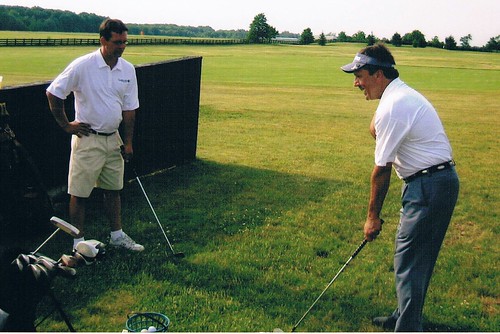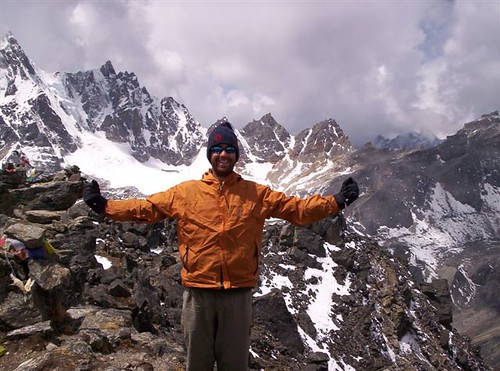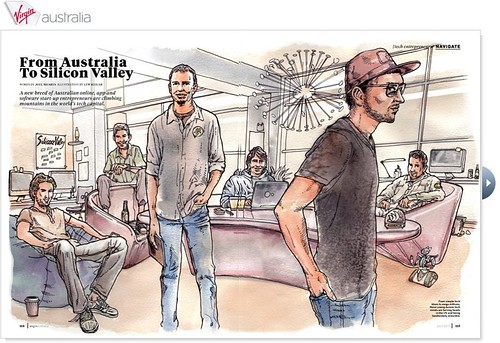Is funding for startups now starting to tamper out? The answer is yes but not really.
Long term trends in the industry have fueled the creation of a seed bubble that is now starting to face the consequences of the tranche of new investors that increased activity in the market. The macro economic environment will create issues that impact the players that have driven the seed bubble which will create a sense of crisis in the industry, compounded with a permanent trend where it is simply now more competitive to raise money as a startup.
Ultimately, what is happening is a readjustment in the industry, rather than a cash crunch and a bubble bursting — and that there will still be money for smart founders and their teams. This is so long as they understand that one of the most important lessons to raising money is on the vision of the founder CEO and not just the traction of the product or calibre of the team.
I’ll be unpacking these statements below.
What made things bubbly
In mid 2010, we saw a dramatic turnaround in Silicon Valley: the boom was back. As some educated commentators noticed, a bubble formed in the early stage of the market. Seed stage startups were now raising money at inflated values. Rather than blaming this on any individual player, the long-term trends in the industry created this transformation in the industry,which in short are the lower costs to build an Internet business.
Consequently, the three major investor groups (incubators, angels and venture funds) boosted this trend to become a new boom. So how did it become bubbly?
With the incubators driven by the seed accelerators, it led to a dramatic increase in the volume of startups. The same money, but spread across more startups meant an increase in volume. This in itself is not what helped cause the early stage bubble, in the same way that a forest is not responsible for a bush fire. However, a less obvious explanation on the impact of this is that investors were now being over-whelmed by deal flow, that they now couldn’t spend the adequate amount of due diligence time required to make an investment. Quicker decisions made to not miss out, lead to fatigue due to the volume and consequently poor judgement, which may lead investors making deals that potentially may not have done if things were at a slower pace. When people are making investment decisions not grounded in fundamental valuations, that’s when we have a bubble.
And the angel investors have been no angels themselves. More startups were now getting funded, more often — shifting the perception of (perceived power) between investors and entrepreneurs that anyone could raise money now. Their biggest crime is in funding seed companies with small ideas hoping for quick returns (like talent acquisitions) or for status to build their personal brands, contributing to the amount of companies that survive post incubation by which will never make it past the gates of a VC.
The impact of venture capital in seed has also fueled the boom but on the valuation side. For a VC, putting money into a startup at a seed stage means less to them than an angel (ie, they are not as price sensitive). Several VC’s don’t set the terms of the money they put in, leaving the entrepreneur to, who price their round as high as they can (if someone was to give you a blank check, would you put a lower or higher number?!). So while some people claim it’s the VC’s that fueled the bubble, it’s more correct to say VC’s facilitated entrepreneurs to over-price themselves for short-term benefit — but long term at a disadvantage as they now have a higher bar to meet in follow on funding.
How the economy will impact the tech fundraising environment
You have $10m sitting around — what are you going to do with that cash? Well, invest it of course. You can have it sit in a term deposit, and make less than 1% interest; or you could put it into a startup and make a 900% return: that’s the allure of angel investing in the early stage. But what if you don’t want to do either? What’s going to generate a return in this economy that’s not idle cash in the bank but also relatively safe at generating a good return? The stock market.
When the stock market crashes due to a confidence issue after news is announced about the economy, so does the wealth of these wealthy individuals. For this reason, the correlation between the economy and the appetite of angels to invest will directly be proportional; whereas it will have practically no impact on newly raised venture funds (typically a 10 year fund, will be actively invested for its first three years).
This is especially true of funds that have been performing in the market as they will be able to continue raising money from limited partners desperate to get returns on their capital. (That said, the amount of successful VC’s is a separate issue — I’ve been told only 30 out of 600 firms in the last decade have shown positive returns.)
In other words, don’t let the economic news affect your thinking on fundraising unless you’re trying to raise from an angel: VC’s actually love it in a downturn as they can now regain their inboxes.
The impact of the seed boom and the road from here
It’s now been 18 months since the seed “bubble” really started. It’s also now when we are seeing the results of these investments.
Startups eventually are going to need to tap into larger investment dollars available only by VC’s as angels bow out of the larger rounds. The impact for the entrepreneur is that it’s now a more competitive landscape to raise funding: a VC who previously picked 2 companies out of 20 to do a series A round, now has 100 to choose from…but can still only pick 2.
Why does this matter? If less startups are being funded, it means they will fizzle out. Investors lose their money. And the truth sets in that angel investing is a risky game. This won’t lead to a significant decrease in angel investing, but it does mean a sobering reality for those investors who just lost some of their wealth.
For existing startups that have already raised a seed round (from angels or VC’s), we’re going to see the impact of the seed bubble in three ways:
(a) You need to sell more than a dream now. For startups trying to raise follow on funding, they now have more data points of their traction and so venture investors are more acute of their cost of capital needs being met. Seed rounds are considered the new Series A, meaning the funding is significant enough that a startup can exist for 18 months — a lot can happen during that time period, so when they go to raise their Series A, the VC’s are no longer investing in an idea and team (a “dream”), but an idea, team, and quantified traction of how realistic the business will be (still a dream, but instead that dream is being explained the next day when people are awake…).
(b) You may be great but overpriced. For startups with existing high valuations from the seed round, we’re going to see higher priced Series A rounds. The consequence is that the smart money will simply step away from this. Others may participate. But what was previously thought a good thing — entrepreneurs being able to over-price their seed round just because they could — is now going to impact them as they now will be raising (or expected to) at a much higher valuation without the necessary traction to justify it.
(c) The bar is now higher. VC’s are being flooded with deal flow now, thanks to the broader trend of lower costs to start a company and looser capital at the early stage (and no, that’s not a good thing as it’s leading to burnout in VC’s trying to keep up which will lead to poorly-researched deals being done, making a real bubble). As a consequence and to the point I raised earlier, there is now just more competition for the same finite spots of investment opportunity by a venture fund. You may have a great product, a great team, and some great traction — but you’re now being compared to many more startups who also have great products, great teams, and great traction.
Never forget in fundraising the cost of capital investors need to meet
At the TechCrunch Disrupt conference in San Francisco last year, I noticed an interesting thing: what the angels and micro-VC’s were saying about what you need to raise capital, was very different from what the experienced VC’s were saying. The VC’s talked about vision, the angels talked about customers, revenues and traction.
If you’re fundraising, don’t underestimate vision and quantifying your market opportunity. Cost of capital is the reason.
In finance, the cost of capital is a term to describe a return needed on equity — think of it like the interest rate on debt. Venture funds who raised money from limited partners, have a cost of capital which is to be able to return the fund and then some. I feel like people see professional investors as rich guys that can give money simply if they like you — not quite. VC’s need to make money, and they are going to do that by investing in startups that they think have a chance of generating a return.
So how do that do that? Well, they look at the team and the product because after all that’s the execution part of the equation. But just as important and if not more important, is the market opportunity. If a VC has a $200m fund, that means they need to have a 20% stake in a billion dollar startup for them to return their fund. If they invest in anything that’s worth less than a billion dollars, then it’s not worth the investment. Of course, VC’s have differing strategies in their investment thesis and may invest in something for other reasons, but for the most part, the reason why VC’s are so interested in the vision is because the CEO founder is painting the picture of a best case scenario of what the opportunity is.
The fundraising equation a professional investor needs satisfied in their head could be explained as the market opportunity (potential valuation) multiplied by the probability of achieving that opportunity (the risk factors in execution reducing the probability) multiplied by the percentage stake in the business. If you’re a billion dollar idea which a good chance at success, why wouldn’t a VC want to invest in you? Founders overlook the importance of the vision because they ignore the fact VC’s are professional investors in the business of generating returns, and instead focus on the product, relationship, and confusing a good product from a product that has the potential to meet an investors cost of capital.
As an aside, this is also why long term we will be seeing more and more micr0-VC funds existing, funding smaller ideas. Why? Because if you think of the equation above, the return needed by Micro VC’s (with say a $50m fund) is much smaller now — an acquisition signed off by a Google/Microsoft/Yahoo VP for $50m rather than a billion dollar IPO is all they need.
The moral to this story?
The industry is in an adjustment phase but we’re not going to see the ugly side of the seed boom as the bubble will be absorbed and far away from the public markets.
You need traction to raise money as that proves your execution and reduces the risk for an investor, but traction without vision is just as bad as a vision without traction. In the next few months, people are going to start panicking, but don’t — the best entrepreneurs will still be able to raise money. You just need to be aware of the cost of capital for the investors you pitch.
Just remember to nail that vision bit.


















